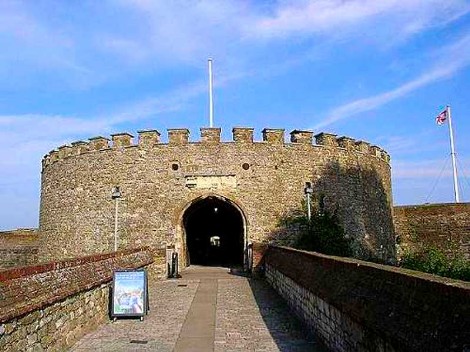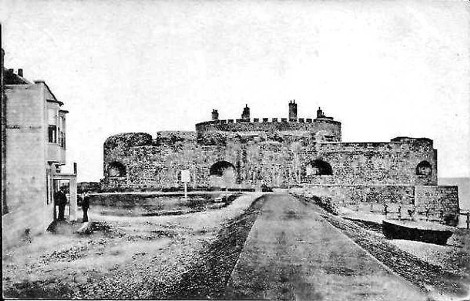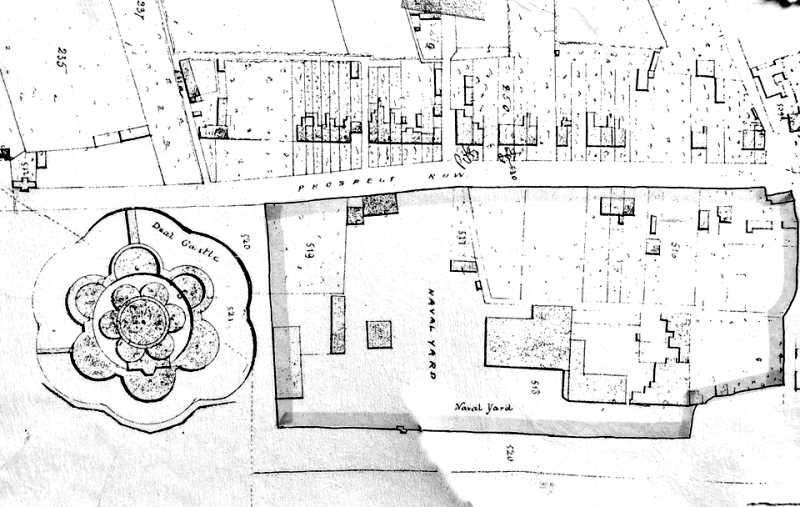A Brief History of Deal
Although the landings of Julius Caesar on the beach at Walmer and Deal on 25 August 55BC and again a year later are probably the best known landmarks in Deal's early history, there is evidence that the area supported Stone Age and Iron Age settlements well before then.
Deal was named as a 'limb port' of the Cinque Ports in 1278. But until the 15th century, Deal was more probably an agricultural community, located around today's Upper Deal with the land nearer the sea mainly marshes, regularly inundated at high tide. Over time, a build up of shingle helped to protect the marshland which dried out and allowed people to move in. This coastal strip was claimed by the church and in the early 1500s the Archbishop of Canterbury, William Warham, is said to have taken a lead in the development of the area around the town's Middle Street, much of which remains today.
In 1539, Henry VIII ordered the building of three castles - Deal, Walmer and Sandown - on the more stable coastline. Both Deal Castle and Walmer Castle remain and are open to the public. Sandown Castle was largely demolished in the late 1800s and the remaining stones incorporated in a concrete sea wall constructed in 1989.

Deal Castle today

Sandown Castle c1880
Although fishing would have become a significant local occupation as Deal developed, it was the town's proximity to two natural features in the Channel that ensured its importance for several centuries. The notorious Goodwin Sands - often referred to as the "Shyppe Swallower" - ensured a frequent need to rescue people and salvage ships and cargo. The other important feature was the area of the sea between the town and the sands known as "The Downs". This offered a safe haven for shipping in bad weather and a convenient place to take on crew, passengers, pilots and supplies - a service that Deal boatmen were delighted to provide.
By the early 1700s, Deal ranked as a major English naval port alongside Portsmouth, Plymouth and Rochester. There was no harbour or docks though, only a dockyard on land between the beach and today's Victoria Road. James Cook landed at Deal in 1771 on returning from his first voyage to Australia and Horatio Nelson stayed in Deal in 1801. After closure of the dockyard in the 1800s, the land was redeveloped for housing.

Old Ordnance Survey map for Deal Naval Yard before 1864
Deal has a long association with the Royal Marines. Because of its proximity to the continent and its strategic naval dockyard, Marines from Chatham and Woolwich were initially quartered in the town and, in 1861, the soldiers moved into permanent local barracks. A brief history of the Marines in Deal, creation of the Royal Marines School of Music and private redevelopment of the barracks can be seen on the WalmerWeb website. Early on 22 September 1989, the Royal Marines School of Music was bombed by the IRA, resulting in the death of 11 bandsmen and the injury of 22 others. On 26 March 1996, the Marines were relocated to Portsmouth but they return every year to provide a concert on Walmer's seafront memorial bandstand.
Deal has the only remaining complete leisure pier in Kent. The third to be built on the site, it was opened in 1957 and is a concrete-clad steel structure with fishing decks and a new cafe at its head. The latter was built in 2008 and has received plaudits for its innovative design. Although the pier is often said to be the same length as The Titanic, that ship was 882ft in length and the pier is 1,026ft. The first pier was designed and built by Sir John Rennie in 1838. A wooden structure, it was destroyed by a gale in 1857 and replaced by an iron pier in 1864. This survived until it was severely damaged by a torpedoed Dutch ship, The Nora, in January 1940.

Deal Maritime and Local History Museum

Deal Timeball Museum
Visitors to Deal will find that the Deal Maritime and Local History Museum in St George's Road has a range of exhibits recording the town's associations with the sea and changing displays on aspects of local history. The Timeball Tower Museum on Deal seafront focuses on its former role in providing accurate timekeeping for shipping. For more details, see local attractions.
For more articles on people and events from Deal's past click here
This page was updated on October 27, 2019